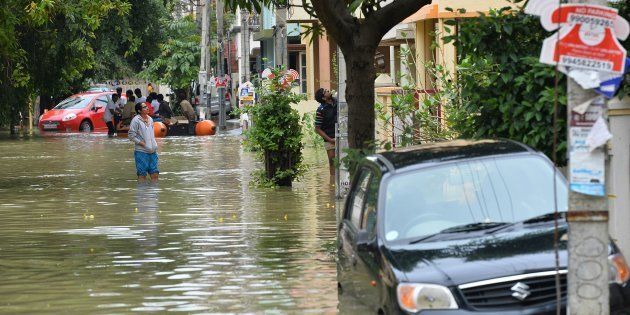
Even as Karnataka's Kodagu district is coping with floods that have killed 12 people, the Karnataka State Natural Disaster Monitoring Centre (KSNDMC) has said that the city of Bengaluru may face the same fate in September, even though a deficit monsoon has been predicted.
The New Indian Express quoted KSNDMC director Srinivas Reddy as saying, "This year, in the monsoon period (June to August), Bengaluru Urban district has a 30% deficit in rainfall. This is similar to the situation last year. While rains in the next two months might not be as heavy as last year, it doesn't mean that the city is safe."
The report said that while pressure over the Bay of Bengal could bring storms to the city and the Centre had informed the administration of the issue, the Bruhat Bengaluru Mahanagara Palike (BBMP) has just begun to remove encroachments that may cause floods.
Flash floods had inundated large parts of Bengaluru last year.
The Times of India had reported last year that storm water drains across the city had been encroached upon, with the BBMP being the largest culprit.
Meanwhile, mismanagement of water from the Cauvery dam is being reported as the reason behind the floods in Kodagu.
Himanshu Thakkar, coordinator of South Asia Network on Dams, Rivers And People, told The Times of India on Monday, "Cauvery reservoirs started getting saturated as early as May end and mid-June, a rare phenomenon. Ideally, the authorities should have started releasing water from dam in June itself, but they didn't do it as they wanted to conserve water for difficult days. But unexpected excess rain in the later part of July and August threw their plans out of of gear. With water being released in huge quantities at once, there were floods downstream."
Karnataka Chief Minister HD Kumaraswamy conducted an aerial survey of Kodagu on Tuesday.
The News Minute reported him as saying that 845 houses , 123 km of roads, 58 bridges, 278 government buildings and 3,800 electric poles had been damaged.